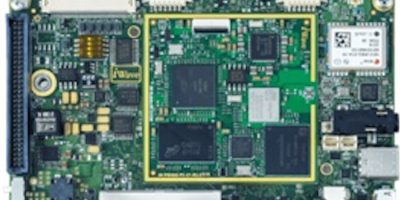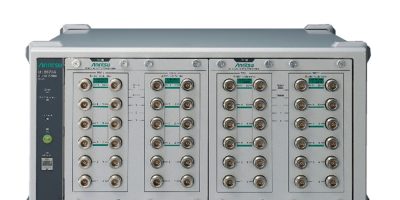Designed for secure and reliable Linux edge processing, the solderable NXP i.MX 91-based LGA system on module (SoM) has been added to the iW-RainboW-G50M family by iWave.
The SoM incorporates the newest member of the i.MX 9 applications processor series and is built on the OSM v1.1 solderable SoM standard. The rugged, compact form factor also offers extensive interfaces, said iWave.
Evaluation kits of the SoM will be ready to purchase this month.
The i.MX 91 SoC combines security, performance and scalability. It can operate as a foundation block for cost-optimised Linux edge devices, said iWave. The i.MX 91 family features an Arm Cortex-A55 running at up to 1.4GHz and an integrated EdgeLock Secure Enclave. There are also dual Gigabit Ethernet, dual USB ports interfaces and essential I/O to fit in products used in smart factory, smart home, medical devices and smart metering.
In addition to the NXP i.MX 91 SoC, the SoM integrates 2Gbyte LPDDR4 RAM, 16Gbyte eMMC flash, two 1Gbit per second Ethernet controllers (one with TSN or time sensitive networking), one 4bit SD, one USB 2.0 OTG, four USB 4.0 host Wi-Fi 6 and Bluetooth 5.3 and IEEE802.15.4 connectivity.
The SoM is in a size-L form factor with dimensions of 45 x 45mm. The solderable LGA package is certified to the OSM v1.1 standard with provision for 662 contact, offering high pin to area ration across the SoM, said iWave. It is part of the company’s 10 years’ product longevity programme.
It is possible to directly solder the SoM onto the carrier card to ensure high levels of robustness for products prone to vibrations, including electric vehicle charging stations, industrial gateways and human machine interface (HMI) displays.
The i.MX 9x family of i.MX 91 and i.MX 93 provides customers scalability with reduced development cost and time to market and provides consumers with efficient power management and advanced security features on the edge, added the company.
The i.MX 91-based system on module is integrated on a carrier board, which is positioned as a single board computer (SBC) and also doubles up as an evaluation kit. The production-ready SBC is built on a Pico-ITX form factor and integrates the necessary interfaces for applications such as smart home hubs, metering gateways, and industrial automation solutions.
The SBC is characterised by the NXP i.MX 91 SoC, 2Gbyte LPDDR4 RAM, 16Gbyte eMMC, Wi-Fi 6, Bluetooth 5.3 and IEEE802.15.4 connectivity. There is also a GNSS receiver module (GPS / GLONASS / Galileo / BeiDou), dual 1000/100/10Mbits per second Ethernet, one USB 2.0 OTG (microAB receptacle connector), a dual USB 2.0 host (TypeA) and one each USB header and USB Type-C connector. There is also a micro SD, 3.5mm audio in and out jack through I2S codec, an M.2 connector Key B, expansion connector (UART, CAN, ADC, Tamper, PWM) and one RS232 header.
The SoM and SBC are production ready, with all documentation, necessary software drivers and board support package available for customers.







